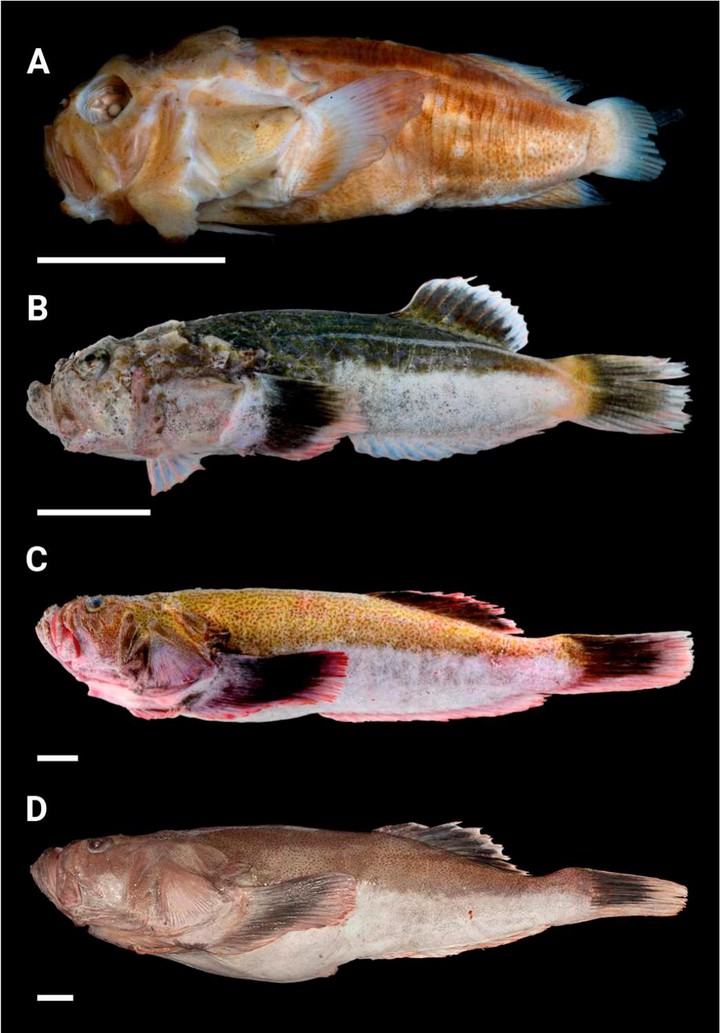 Figure 1
Figure 1
Abstract
The Freckled Stargazer, Xenocephalus egregius, is a member of the family Uranoscopidae and the only member of the genus Xenocephalus found in the western Atlantic Ocean. Xenocephalus egregius has a complicated taxonomic history because of confusion identifying specimens due to ontogenetic changes. In this paper, we redescribe X. egregius based on 60 specimens, detailing ontogenetic changes in anatomy and color to improve identification of this species. We find dramatic changes in color and body pattern as the species grows, changing from blue and green streaks to yellow gold with brown freckles. Changes in anatomy, such as the size of the dentary flange and preopercular flange, are also evident. Using museum collections and new specimens, we evaluated the species’ geographic and depth distribution. We expand the range of X. egregius to include the southern Gulf of Mexico off the Yucatan Peninsula to the northwestern Atlantic Ocean near New Jersey. We also found depth-related differences between specimens collected in the Gulf of Mexico and those collected in the northwestern Atlantic Ocean. Finally, we sequenced the full mitochondrial genome of a specimen of X. egregius and use the cytochrome oxidase subunit 1 (COI) barcode region to compare specimens of X. egregius across the newly expanded range, as well as to other members of the Uranoscopidae, to test the monophyly of the genus. Using COI data, we found that all specimens of X. egregius examined are identical, and comparisons to other uranoscopids resolve both the species and genus as monophyletic. Nearly all specimens examined were collected on fisheries surveys, and thus our study highlights that such surveys not only inform fisheries management but contribute to building natural history collections and studies of biodiversity.
Almetric and Dimension badges